Piscine per cani
Un'opzione rinfrescante in estate

SONO CONSIGLIATE LE PISCINE PER CANI?
Tempo di lettura approssimativo : 8 minuti
Proprio come succede a noi, quando arrivano le alte temperature, i cani possono sentirsi molto accaldati e soffocati. Potresti notare che il tuo animale domestico è più abbattuto o svogliato e meno desideroso di giocare. Hai mai pensato di acquistare una piscina per cani? In commercio esistono moltissimi tipi di piscine pensate appositamente per l'utilizzo di questi animali, realizzate con materiali più resistenti e di diverse dimensioni.
Ma fa bene al cane fare il bagno in piscina? La risposta è sì (anche se è necessario tenere conto di alcuni accorgimenti), poiché permette loro di regolare la temperatura corporea e di rilassarsi e rinfrescarsi quando fa caldo.
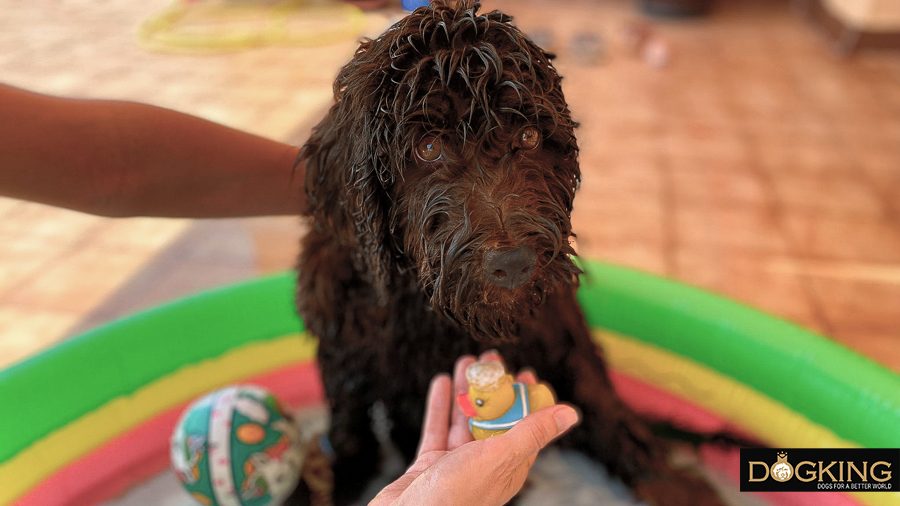
Indice del contenuto
1- Come scegliere una buona piscina per il mio cane?
2- Il mio cane può fare il bagno nella mia piscina?
4- Cosa succede se il mio cane ha paura dell'acqua?
Come scegliere una buona piscina per il mio cane?
Molte persone commettono l’errore di acquistare piscine convenzionali da utilizzare con i propri cani. Il risultato è che il materiale, troppo fragile per i denti e le unghie di questi animali, dura pochissimi giorni prima di rompersi, rendendoli uno spreco di denaro poco consigliabile. Le piscine per cani, invece, sono normalmente realizzate in PVC, un materiale molto resistente e adatto ai nostri animali domestici. Inoltre, quando acquisti una piscina per cani, tieni presente che soddisfa i seguenti requisiti e considera i nostri consigli.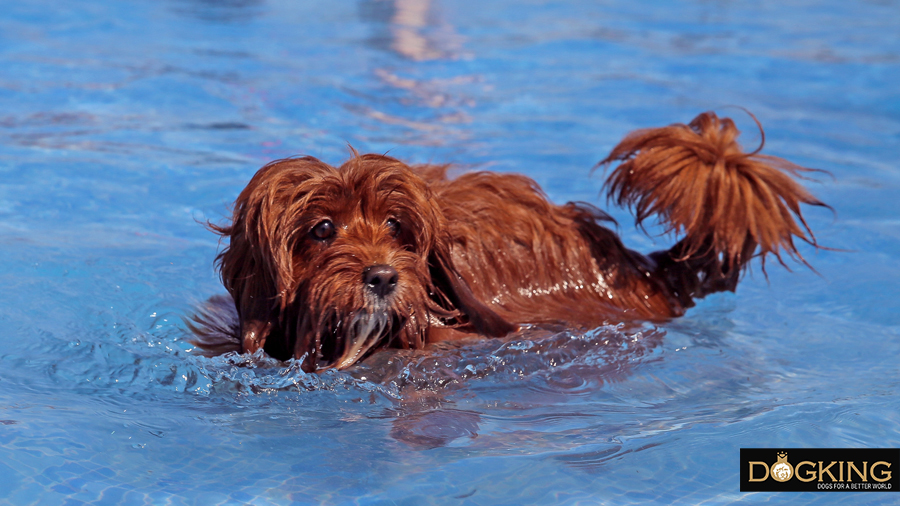
Che si possa piegare
Sebbene ci siano alcune piscine gonfiabili per cani che promettono di essere più robuste delle tipiche piscine per bambini, le piscine pieghevoli sono un'opzione molto più durevole. Il loro materiale è solitamente più resistente e rigido e incorporano un trattamento antiscivolo sul fondo per una migliore presa. Inoltre, nonostante non siano leggeri come quelli gonfiabili, potrete facilmente ripiegarli per riporli quando l'estate sarà finita. D'altra parte, la maggior parte delle piscine gonfiabili per cani sono in realtà piscine per bambini che si rompono rapidamente a causa dello sfregamento delle unghie e dei denti dell'animale.
Che abbia una dimensione adeguata
La piscina giusta per il tuo cane è quella che è abbastanza grande da permettergli di sdraiarsi, allungarsi, rotolarsi e, infine, sentirsi libero e rilassato. Tuttavia, se il tuo cane è di taglia piccola o media, fai attenzione all'altezza della piscina, perché il tuo animale domestico deve poter raggiungere il bordo per uscire dall'acqua quando vuole. Anche se il tuo amico peloso sa nuotare, le dimensioni della piscina dovrebbero permettergli di entrare e uscire facilmente quando ne ha bisogno.
Di semplice installazione
Con l'arrivo dell'estate e del caldo si perde la voglia di svolgere lavori molto pesanti, quindi se non vuoi che la piscina del tuo cane rimanga chiusa in un angolo del garage, privilegia i modelli facili da installare. Informatevi molto bene sul processo di assemblaggio affinché il vostro cane possa godersi i suoi piacevoli bagni senza complicazioni.
Che abbia uno scarico per lo svuotamento
Sembra ovvio, ma non tutte le piscine per cani sono dotate di valvola per lo svuotamento. Se hai un cane di piccola taglia e usi una piscina piccola, questo non è molto importante, perché non ci vorrà molto per svuotarla (puoi scaricare velocemente l'acqua nella vasca), ma se la piscina del tuo cane è più grande, togli l'acqua con dei secchi non ti piacerà. Tuttavia, una piscina dotata di scarico si svuota rapidamente, quindi puoi dedicare il tempo a pulire la piscina fino al prossimo utilizzo.
Il posto migliore dove posizionare la piscina per cani
Una volta acquistata la piscina ideale per il tuo cane, dovrai scegliere un buon posto dove metterla. Consigliamo che sia un luogo ombreggiato, poiché se il vostro animale trascorre molte ore esposto al sole potrebbe subire ustioni o insolazioni. Scegliere una superficie piana, senza sporgenze del terreno, sassi o pendenze. C'è chi ha cani di piccola o media taglia preferisce improvvisare piscine fatte in casa con vasche, ma queste vanno posizionate nei luoghi più freschi e ventilati possibile, poiché solitamente non sono resistenti al calore e possono diventare troppo calde, provocando il surriscaldamento dell'acqua molto rapidamente.
Rendilo divertente!
Se vuoi che il tuo animale domestico non dimentichi mai i suoi bagni estivi in piscina, assicurati di mettere in acqua i suoi giocattoli sommergibili preferiti. Puoi anche optare per piscine con getti, che renderanno il momento del bagno molto più divertente.
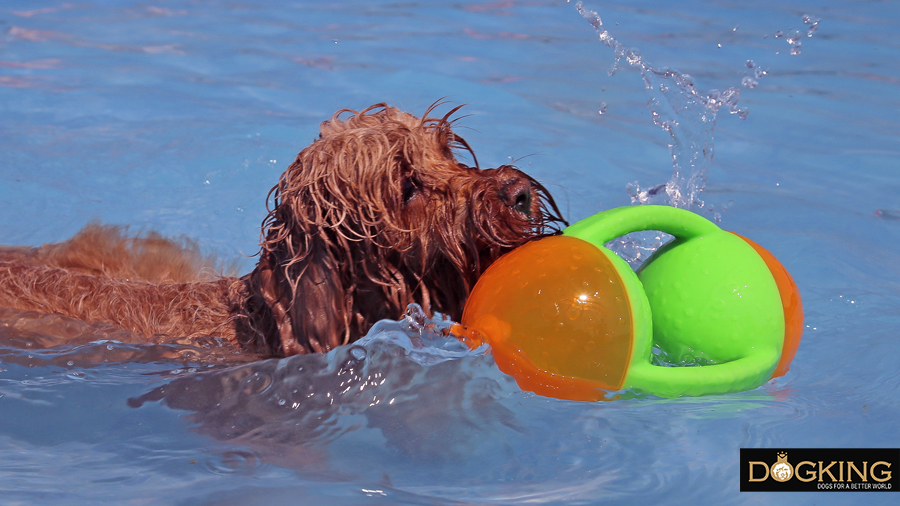
Precauzioni quando si fa il bagno al cane in piscina
Come membro della tua famiglia, anche il tuo cane merita di godersi una nuotata rilassante e divertente nella tua piscina. Tieni comunque a mente questi consigli per evitare qualsiasi tipo di problema:
- Proteggi il tuo cane dal sole. Posiziona la piscina in un luogo ombreggiato o, se ciò non è possibile, usa una protezione solare adatta ai cani e riapplicala ogni tanto secondo l'etichetta. Anche in questo caso non è consigliabile che il cane passi troppo tempo esposto al sole, quindi la cosa più sicura da fare è abbinare brevi bagni a periodi di riposo.
- Spazzolalo prima e dopo il bagno. Se la spazzolate prima di entrare in acqua potrete rimuovere i peli in eccesso o tracce di polvere e sporco, mantenendo la piscina più pulita più a lungo. Nel caso dei cani a pelo lungo come l'Australian Cobberdog, è necessario spazzolarli prima del bagno, in modo che eventuali grovigli che potrebbero avere vengano rimossi prima, poiché il pelo bagnato fa sì che il nodo si chiuda di più cosí che quando lo asciughiamo avremo maggiori problemi.
- Risciacqua il suo pelo. Dopo il bagno, dovete risciacquare il vostro cane con acqua pulita per rimuovere eventuali resti di polvere, foglie o erba che potrebbero essere caduti nella piscina durante il bagno. L'acqua nelle piscine per cani è stagnante e anche se va mantenuta pulita, cambiandola periodicamente, una doccia fresca non fa male per completare il bagno del vostro cane.
- Asciugatelo molto bene. Quando esci dall'acqua, asciuga le orecchie del tuo animale domestico, così come i cuscinetti e la zona sotto la coda, con un asciugamano o un panno asciutto. La pelle bagnata può soffrire molto più facilmente di infezioni, quindi asciugala con il phon a casa in modo che le parti più profonde del mantello non rimangano umide.
- Vaccinazione e sverminazione aggiornate. L'acqua è un mezzo in cui alcuni batteri proliferano più facilmente, quindi è essenziale che il tuo cane sia protetto per evitare infezioni. Infatti, i cuccioli non dovrebbero fare il bagno in una piscina pubblica se non hanno completato le vaccinazioni obbligatorie, poiché sono più vulnerabili a queste malattie.
- Non dargli da mangiare né prima né dopo. Per evitare uno shock termico durante la digestione, è preferibile non dare da mangiare al cane un'ora prima o un'ora dopo il bagno in piscina. Ovviamente non dargli nemmeno il cibo nell'acqua.
Il mio cane può fare il bagno nella mia piscina?
Se nel tuo terreno o giardino hai una piscina, puoi lasciare che il tuo cane ci faccia il bagno, ma sempre sotto la tua supervisione. Infatti, il tuo cane non dovrebbe avere accesso alla piscina a meno che tu non sia con lui, quindi assicurati di proteggerlo con una recinzione, se necessario. Anche se il tuo cane sa nuotare, è pericoloso per lui stare da solo in acqua, perché potrebbe soffrire di qualche problema, come un crampo muscolare, una puntura di vespa con reazione allergica, una scottatura solare, ecc.
Inoltre, dovresti assicurarti che il tuo cane non beva l'acqua della piscina, poiché il cloro e le sostanze chimiche che contiene per mantenerla pulita potrebbero causare avvelenamento, con sintomi come vomito o diarrea. Se il tuo animale domestico ha bevuto l'acqua della tua piscina e pensi che possa soffrire di avvelenamento da cloro, portalo immediatamente dal veterinario. Inoltre, il contatto prolungato con il cloro può causare irritazioni agli occhi e alla pelle e secchezza del pelo. Dopo che il tuo cane si è goduto una nuotata con te nella tua piscina, ricordati di fargli una doccia con acqua pulita e sapone per rimuovere eventuali detriti dalla pelliccia e dalla pelle.
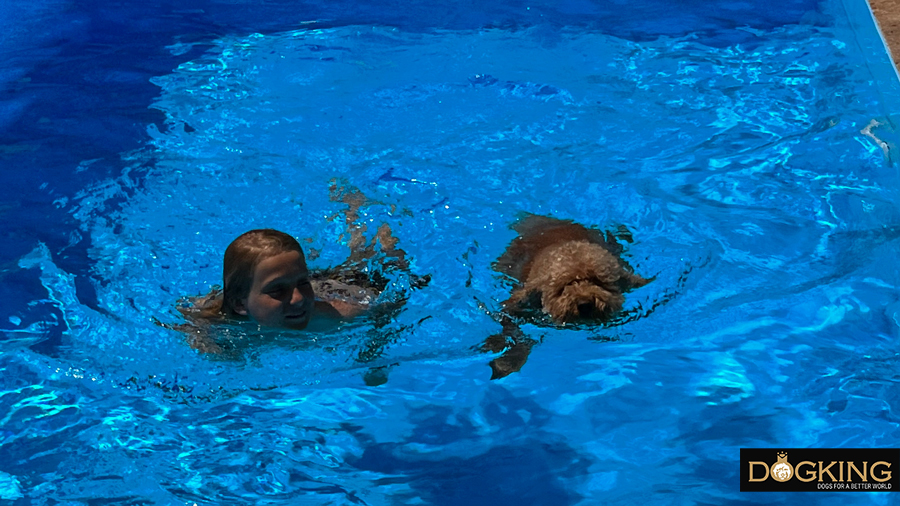
Piscine pubbliche per cani
Infine, un'ottima opzione per far sì che il tuo cane possa godersi un bel bagno estivo sono le piscine pubbliche per cani. Esistono sempre più piscine di questo tipo, con scivoli e profondità diverse. In queste strutture acquatiche canine è necessario seguire alcune regole, come la tipologia dei cani ammessi in ogni area, la vaccinazione e la sverminazione degli animali per poter accedere, evitando così il proliferare di infezioni.
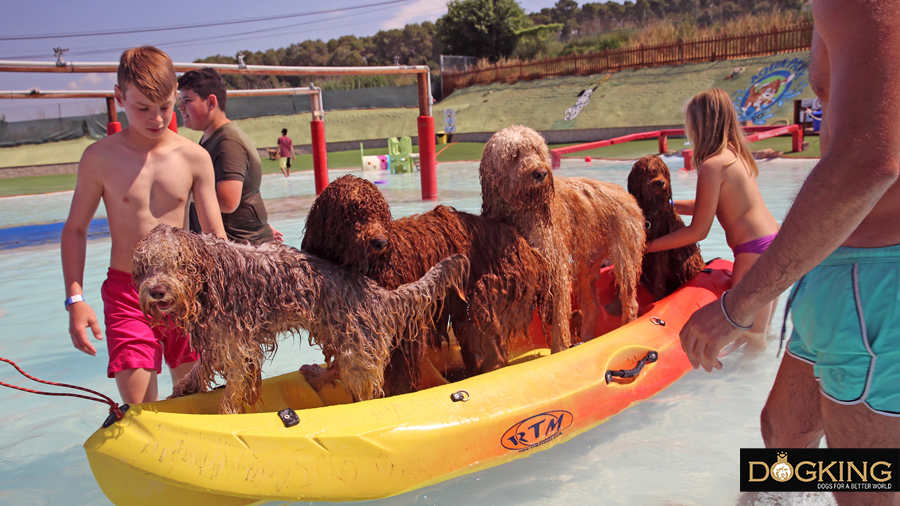
Cosa succede se il mio cane ha paura dell'acqua?
La maggior parte dei cani sa nuotare istintivamente, ma non tutte le razze nuotano con la stessa facilità. Non importa quanto sia caldo il tuo animale domestico e non importa quanto pensi che trarrebbe beneficio da un tuffo in piscina, non dovresti mai forzarlo a entrare in acqua se ha paura, cosa che tende ad accadere più comunemente con le grandi piscine umane. Cerca di mantenere un'esposizione graduale alla piscina. Puoi giocare con i suoi giocattoli preferiti nell'acqua e lasciare che ti guardi semplicemente. Potrai entrare nella piscina ed interagire con essa dall'interno e, poco a poco, risveglierai la curiosità del tuo cane. La cosa normale dovrebbe essere che, ad un certo punto, entri in acqua da solo, ma se non vedi progressi o se non vedi interesse da parte sua, non forzarlo in nessun caso.
Ogni cane ha la sua personalità e le sue preferenze e l'importante è trovare un modo per rinfrescarsi e godersi l'estate insieme, che si tratti di una bella nuotata in piscina, di qualche corsa in riva al mare o di qualche rinfrescata in giardino.